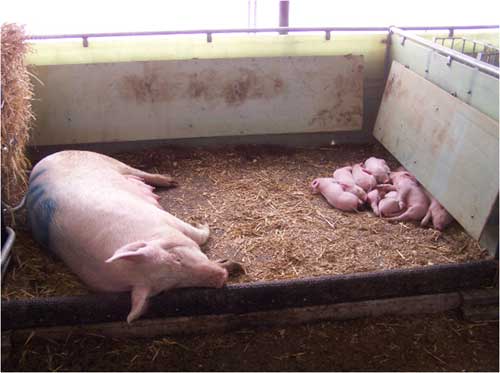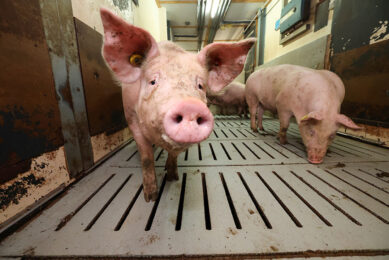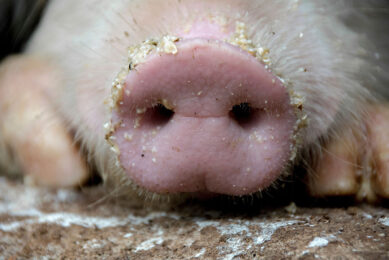Reducing piglet mortality through improved farrowing pens

Researchers at the Norwegian University of Life Sciences (UBM) are studying the habits of newborn piglets and thier mothers with the aim of reducing piglet mortality.
Currently the mortality rate among piglets in Norway is around 15%, with most of them dying withing the first 48 hours of birth. Starvation and crushing are the most common causes of death, often in combination with hypothermia.
Associate Professor Lise Andersen, of Ethology (the study of animal behaviour) at the University of Life Sciences (UMB) at Ås south of Oslo, believes she has found a solution to the mortality problem: a unique farrowing pen that takes account of the sow’s biology and behavioural requirements while providing greater safety for the piglets.
Today, all free-range sows are moved to farrowing pens when the birth is approaching. The sow and litter stay there until the piglets are around five weeks old. Traditional farrowing pens have a separate corner for piglets with a heating lamp.
Researchers tried to create a piglet corner but no matter what they did the piglets preferred to be close to thier mother. So researchers took a new approach an created an open pen with an activity area and a nest area. The areas are separated by a barrier that only the sow can cross at first. This means that she gets peace and quiet in the activity area for eating and dunging, while the nest area is reserved for suckling and sleeping.
In the nest area, the piglets lie on rubber mats, and the slotted floor in the activity area is also covered in rubber. This seems to prevent shoulder sores and leg problems in the sow. To prevent the 200-kilo sow from lying on the piglets, a sloping panel has been installed that slopes down from the actual pen wall. This means that the piglets can retreat to the space between the wall and the sloping panel when their mother lies down.
The nest area also has floor heating in two zones that can be controlled separately. This means that the sow, whose body temperature is higher when she lactates, can lie in a nest area without floor heating, while the piglets can lie on the heated floor.
Cameras follow the life in the pen, and the researchers analyse how the sow takes care of her litter and how she uses the pen. The results are promising.
‘We have now reached a piglet mortality rate of around 9%, compared with an average of 15% under the current system. The sow quickly calms down when she is moved to the pen, she is calm around the time of farrowing and uses the pen the way we intended. The piglets are also growing nicely,’ says Associate Professor Andersen.
When sows have exceptionally big litters, the researchers see that several piglets do not make it.
‘We have found that the sows have a biological capacity of 10-12 piglets in one litter. Anything above that requires external help in the form of assistance from the farmer. In our trial, we interfere as little as possible,’ she says, and believes that this has an effect on the mortality rate.
So far, the pen has only been tested on a limited number of pigs at UMB and its partner institution, the University of Sydney. Improvements will have to be made and testing is required on a larger scale before the pen can be put into commercial production.
‘We hope to start a collaboration that involves testing 40 pens on ordinary pig farms,’ says Associate Professor Andersen. The goal is to carry out tests on a total of 120 sows.
The project receives support from the Research Council of Norway’s Food Programme and the Foundation for Research Levy on Agricultural Products/the Agricultural Agreement Research Fund. They are also collaborating with their researchers at the University of Sydney in Australia on the project.
Join 18,000+ subscribers
Subscribe to our newsletter to stay updated about all the need-to-know content in the pigsector, three times a week. Beheer
Beheer










 WP Admin
WP Admin  Bewerk bericht
Bewerk bericht